
Coins catalog of German Empire (1871-1918)
Total added coins: 2110
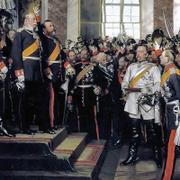
Prices of coins of German Empire
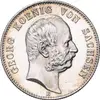
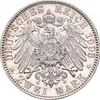
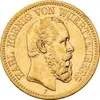
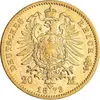

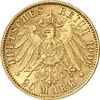
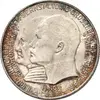

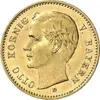
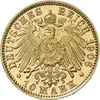
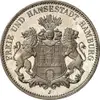
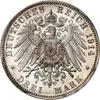
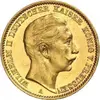
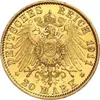

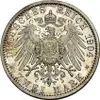





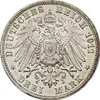
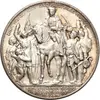









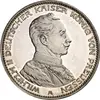

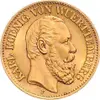

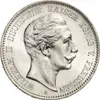



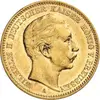










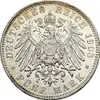
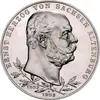
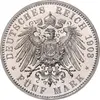
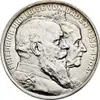


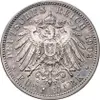

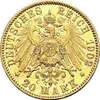







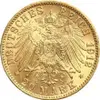






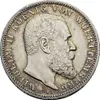
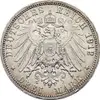
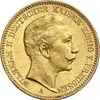
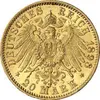
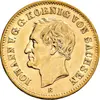
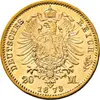



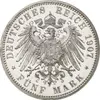






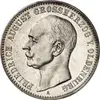

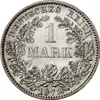


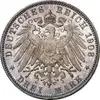

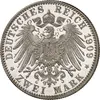


- Coins history
Coinage of the German Empire from 1871 to 1918
Historical review
German military union led by Prussia defeated France in the Franco-Prussian War in 1871. As a result, four southern German states joined North German Confederation. This marked the beginning of the foundation of the German Empire, consisting of four kingdoms, six grand duchies, five duchies, seven principalities, three free Hanseatic cities, and one imperial territory. The Prussian king Wilhelm I was the first emperor and Otto von Bismarck, who is often called the architect of the new empire, became his Chancellor.
The time between 1871 and 1914 was characterized by rapid development of industry and trade; industrial production increased 6 times. Germany was no more a rural country, but an important industrialized power.
The year 1888 is known in the history books as the Year of the Three Emperors. The emperor Wilhelm I died on March 9, 1888, in Berlin. He was then succeeded by his son, Frederick III, who had cancer of the larynx and died in Potsdam on June 15, after only 99 days of rule. On the same day, his son Wilhelm II succeeded to the throne.
Wilhelm II was known for his undiplomatic and tactless behavior that led to several domestic and foreign political crises. In 1890, he dismissed Chancellor Otto von Bismarck. The further period is known as the «Wilhelmine Era» and is characterized by Prussian militarism and striving for world power.
The outbreak of the First World War in 1914 was provoked by the assassination of Archduke Franz Ferdinand, the heir to Austrian throne, and his wife in Sarajevo, Bosnia. Due to a complicated system of alliances, this regional conflict quickly expanded into a continental war. Shortly after, Germany, Austria, Ottoman Empire, Bulgaria, France, Russia and Great Britain found itself in a state of war. Later, Italy, Japan and the USA also joined the war. In total, 25 countries with about 1.4 billion inhabitants were at war. Initial enthusiasm soon gave way to disappointment as this was the first war to use modern weapons of mass destruction. The results were disastrous: 10 million deaths, 20 million wounded soldiers and about 7 million civilian casualties.
The war ended in a stalemate. After the fronts became deadlocked and the conflict turned into an everlasting trench warfare without any territorial advantages for either side and after the USA joined the war in 1917, Germany surrendered. The end of the war had a profound impact on Europe: four monarchies — Germany, Austria-Hungary, Ottoman Empire and Russia ceased to exist. New sovereign states popped up on the political scene — Poland, Czechoslovakia and Baltic countries. The United States of America grew into a world power. Germany had to accept harsh peace terms and high reparations. Then uprisings and strikes followed. In 1918, the Weimar Republic was proclaimed by Philipp Scheidemann and, just 19 days later on November 28, Wilhelm II officially abdicated. That was how the German monarchy ended.
Coins of the German Empire
With the founding of the German Empire in 1871, a single national currency was introduced, and coins of old German states were gradually eliminated. The new currency was the mark divided into 100 pfennigs. 3 marks were equal to the old thaler. However, there was initially no 3-mark coin.
The frontside of coins usually depicted the respective rulers or, in the case of cities, the coat of arms. The backside showed the Imperial Eagle modelled after the coat of arms of the Holy Roman Empire of the German Nation. As from 1890, the Imperial Eagle was increased by law. The following coins were minted:
- 1 pfennig (from 1873)
- 2 pfennigs (from 1873)
- 5 pfennigs (from 1874)
- 10 pfennigs (from 1873)
- 20 pfennigs (from 1873)
- 25 pfennigs (from 1909)
- 50 pfennigs (from 1875)
- half mark (from 1905)
- 1 mark (from 1873)
- 2 marks (from 1876)
- 3 marks (from 1908)
- 5 marks (from 1874)
- 5 golden marks (from 1877)
- 10 golden marks (from 1877)
- 20 golden marks (from 1871)
Each mint was marked with its letter:
- A = Berlin
- B = Hannover
- C = Frankfurt
- D = Munich
- E = Dresden and Muldenhütten
- F = Stuttgart
- G = Karlsruhe
- H = Darmstadt
- J = Hamburg
Small coins (from 1 to 25 pfennigs) were made of non-noble metals like copper, copper/nickel, iron, zinc, nickel and aluminum. The exceptions were the 20-pfennigs coins issued between 1873 and 1877, which were made of silver, as well as 50-pfennigs coins, and coins from half mark to 5 marks. All silver coins are 900/1000 fine. Golden coins with the value of 5, 10 and 20 marks have a gold fineness of 900/1000.
During the First World War there was a scarcity of materials. For this reason, small coins were minted from low quality materials like iron, zinc and aluminum. Private companies and municipalities were also allowed to mint coins in case of emergency. Silver and golden coins disappeared from circulation. Because of the wartime, silver commemorative coins were allowed only on a few occasions during the war, and to a very small extent though. Due to their small mintage, the following coins constitute a numismatic treasure and have special value, e.g.:
3 marks of 1918, D. Bavaria for the Golden Wedding of Ludwig III and Marie Therese (D, Bayern zur Goldenen Hochzeit von Ludwig III. mit Marie Therese) (mintage: 130)
3 marks of 1917, E. Saxony on the 400th anniversary of the Reformation (E, Sachsen zum 400-jährigen Reformationsjubiläum) (mintage: 100)
Indeed, the last of the coins listed above is the rarest and most valuable coin of the German Empire.
Heinrich Hegen



 Polski
Polski
 Русский
Русский
 Deutsch
Deutsch
 Español
Español































